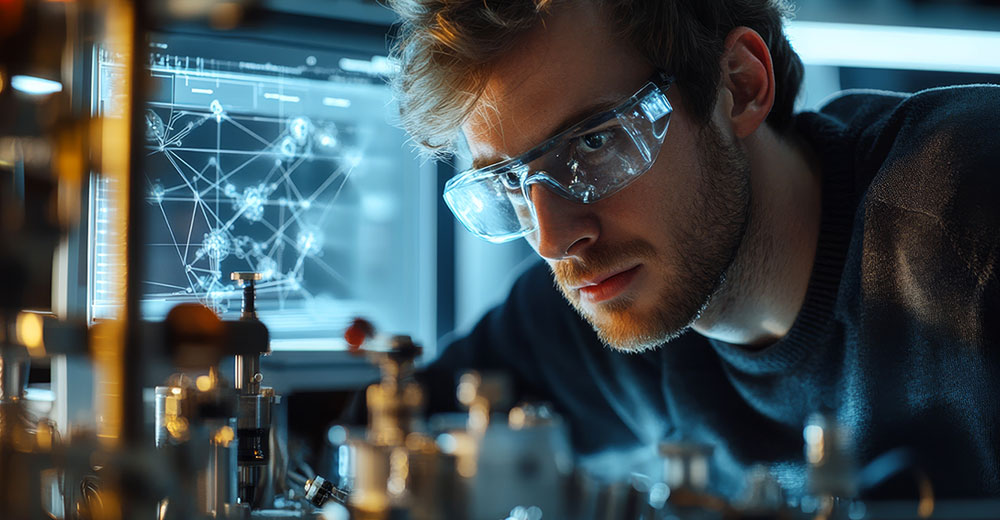
Interest in nanochemistry research and energy storage led 18-year-old Eesha Khare, a senior at Lynbrook High School in San Jose, to develop a supercapacitor that could potentially be used in flexible displays and fabrics.
Her effort won her first prize at the Intel Science Fair and the Project of the Year award in the California State Science Fair’s senior division for 2013.
Khare created a nanorod electrode capacitor with increased electricity density that retained a supercapacitor’s energy density and long life.
“I wanted to see if I could apply my research to a commercial idea,” Khare told TechNewsWorld. There hasn’t been as much research done in the supercapacitor area as there is for batteries and capacitors, so she decided to focus on supercapacitors.
There’s been speculation that the supercapacitor might be able to recharge a cell phone battery rapidly, but “this advancement is not really about charging mobile solutions, it’s about power storage,” said Jim McGregor, principal analyst at Tirias Research. “Perhaps instead of two batteries or cells, you might have a single battery or cell with something like this capacitor to recharge the battery.”
A Thumbnail Sketch of Khare’s Project
Khare designed, synthesized and characterized a core-shell nanorod electrode with a hydrogenated titanium dioxide core and polyaniline shell.
The titanium dioxide acts as a double-layer electrostatic core. In electric double-layer capacitors, the electrical charge stored at the interface of a metal, and an electrolyte is used to construct a storage device.
The good conductivity of the hydrogenated titanium dioxide combined with the high pseudocapacity of polyaniline results in heightened overall capacitance and energy density while retaining power density and cycle life. Pseudocapacitance can increase the capacitance value of a supercapacitor by an order of magnitude over the double-layer’s capacitance.
Researchers often work with one form of titanium dioxide, anatase, but Khare grew rutile titanium dioxide crystals instead because “rutile offered a direct electron transport pathway” even though it was harder to grow.
She put down an initial seed growth of rutile on a flexible substrate and used thermodynamic growth, where the rutile aggregated on top of itself.
The new electrode was fabricated into a flexible solid-state device to light an LED as a test of a practical application. It demonstrated a capacitance of 238.5 Farads per gram compared to the 80 F/G of the next best alternative supercapacitor in previous research. This resulted in excellent energy density of 20.1 Wh/kg, comparable to batteries, while maintaining a high power density of 20540 W/kg. It also demonstrated a much higher cycle life compared to batteries.
Khare used laboratory equipment at the University of California Santa Cruz under the supervision of professor Yat Li, who agreed to work with her after she had reached out to “30 or 40 professors at many universities in my area” without success.
Google has reached out to Khare but “I haven’t followed through with them yet.”
Google did not respond to our request to comment for this story.
Comments on Khare’s Work
Supercapacitors “are probably not very useful in consumer electronics where sustained power is needed,” Harold Kung, a professor in Northwestern University’s chemical and biological engineering department, told TechNewsWorld. “Supercapacitors are used where you need a surge of power rapidly for a very short time. Batteries discharge power slowly, which is why you can power your cell phone for a long time.”
Whether or not a supercapacitor could be used on flexible fabric is open to question because of their rapid discharge, Kung said.
Recharging a cell phone battery or any lithium-ion (Li-ion) battery in a matter of minutes or even seconds is easy, Tirias Research’s McGregor told TechNewsWorld. “It’s keeping the battery from catching fire and exploding that is the challenge.”
Many companies are working to improve the algorithms to manage charging in Li-ion batteries, McGregor noted. Also, Qualcomm offers Quick Charge 2.0 technology, which should cut battery charging time by about 50 percent.






















































Once again the media has credited the wrong person with inventing a technology. The inventor of this tech filed Patent applications worldwide 7 years ago on this very tech.
Although Eesha’s work is commendable, the media has indeed credited the wrong person with this invention. Solaroad Technologies, a solar innovation company located in Baltimore, MD was the original inventor of the nano battery and holds patent applications worldwide on it. Their CEO (Kahrl Retti) has been in the nanostructure field for years. Directed towards the writer, please check your facts.
I would respectfully disagree. Not only is the patent application to which you refer abandoned, your recited capacitor structure (quoted in relevant part) is: "… comprising at least two conductors that are spaced apart and substantially parallel…" whereas student Khare’s capacitor structure comprises "… a core-shell nanorod electrode with a hydrogenated titanium dioxide core and polyaniline shell."
Or, in non-patent terms, please pick on somebody your own size.
Umm. Patents don’t, or at least shouldn’t, apply to "generalized" design. In a case like this, they tend to be "specific" to the materials in use to produce the result. They pretty much have to be, since whether or not there is a patent on "capacitors" in general, this is a specific case of them, and, if different enough, "can be" given a different patent. I would go so far as to argue that it "must be", or at least "should be". But, given how screwed up the patent system is, who the frak knows…
In any case, just because someone has a patent on something, doesn’t mean people can’t find major improvements, and unless you can claim that the patent you are talking about included these "specific" improvements.. you are not making much sense to claim that this student didn’t come up with the improvement. The article, as far as I can tell, doesn’t make the claim that they "invented" this class of super-capacitor, but that they found a better way to do so.
Oh yeah!
A level head with the correct point of view!
Kudos!
What we as a society needs are people like this young lady who will find answers for the benefit of all and give the middle finger to patent money grubbing morons!